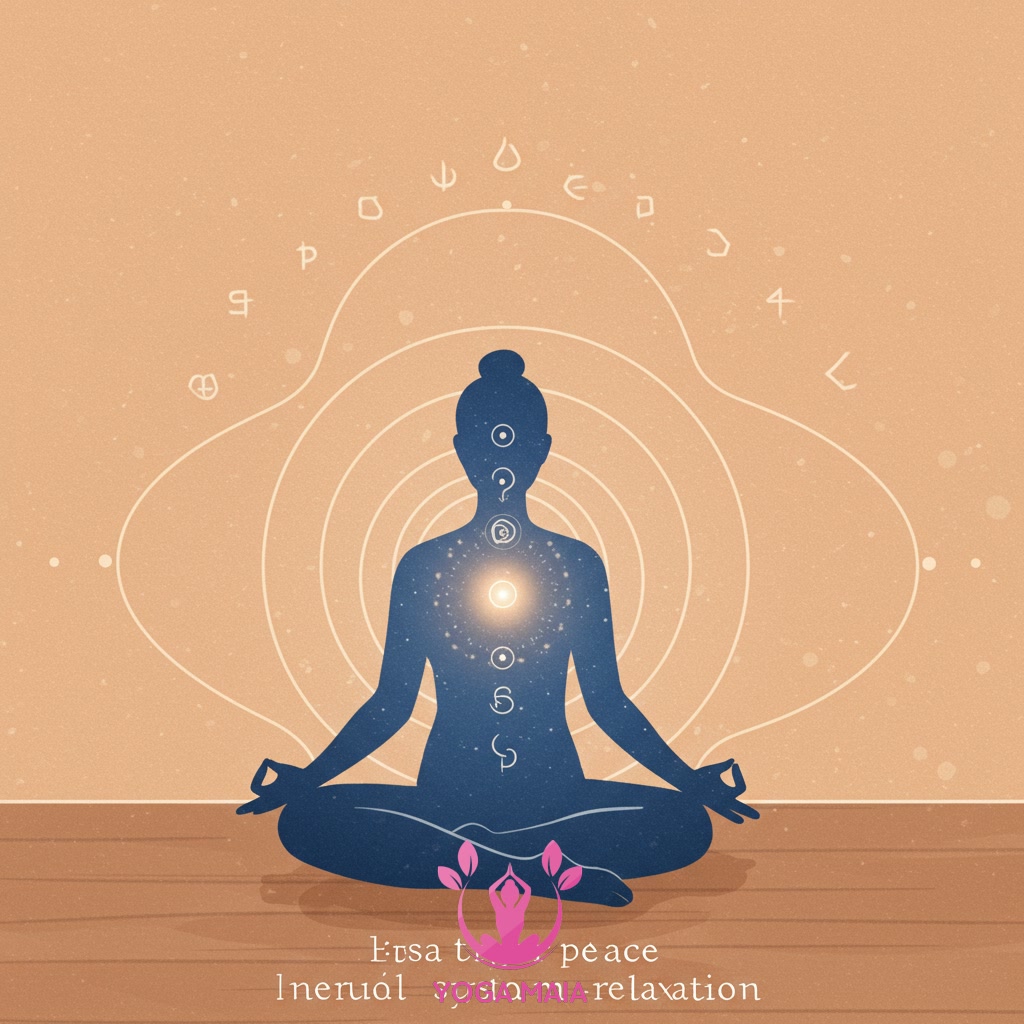Yoga Blog
Understanding Yoga’s Benefits for Your Nervous and Circulatory Systems

This content examines the significant health advantages derived from practicing yoga. It specifically details how yoga techniques contribute to the improved functioning of the nervous system, promoting relaxation and stress reduction. Furthermore, the material highlights the positive effects of yoga on the circulatory system, enhancing blood flow and cardiovascular health.
Table of Contents
- Section 1: Introduction: The Mind-Body Connection and Yoga
- Section 2: Yoga’s Impact on the Nervous System: Stress Reduction and Regulation
- Section 3: Yoga’s Impact on the Circulatory System: Improving Blood Flow and Heart Health
- Section 4: How Specific Yoga Practices Benefit These Systems
- Section 5: Integrating Yoga into Your Routine for Systemic Health
- Section 6: Conclusion: Embracing Yoga for Nervous and Circulatory Well-being
Section 1: Introduction: The Mind-Body Connection and Yoga
The traditional Western view often separates the mind and body, treating them as distinct entities. However, ancient philosophies and modern science increasingly recognize a profound mind-body connection—an intricate relationship where thoughts, emotions, and mental states directly influence physical health, and conversely, physical well-being impacts mental clarity and emotional balance. Yoga is a practice fundamentally rooted in this holistic understanding. Through a combination of physical postures (asana), conscious breathing (pranayama), and meditative techniques, yoga actively works to harmonize these two aspects of our being. By engaging both the physical form and the inner consciousness, yoga provides a powerful pathway to manage stress, enhance self-awareness, and cultivate overall well-being, setting the stage for understanding its specific benefits on physiological systems like the nervous and circulatory systems.
 Introduction: The Mind-Body Connection and Yoga
Introduction: The Mind-Body Connection and Yoga
Section 2: Yoga’s Impact on the Nervous System: Stress Reduction and Regulation
Building on the understanding of the mind-body connection, yoga provides practical techniques to directly influence the nervous system. Through controlled breathing exercises (pranayama), physical postures (asanas), and meditation, yoga helps shift the body from the “fight or flight” state, governed by the sympathetic nervous system, towards the “rest and digest” state, controlled by the parasympathetic nervous system. This shift is crucial for reducing stress, anxiety, and tension. Regular practice lowers cortisol levels, the primary stress hormone, and promotes feelings of calm and relaxation. By consciously engaging these techniques, individuals can learn to regulate their nervous system response, leading to improved emotional balance and resilience against daily stressors.
 Yoga’s Impact on the Nervous System: Stress Reduction and Regulation
Yoga’s Impact on the Nervous System: Stress Reduction and Regulation
Section 3: Yoga’s Impact on the Circulatory System: Improving Blood Flow and Heart Health
Following the calming effects yoga has on the nervous system, its physical postures and controlled breathing techniques also profoundly benefit the circulatory system. Asanas involve movements that gently compress and release muscles, which helps to pump blood back towards the heart, improving overall circulation. Inversions, for example, encourage blood flow from the lower body. Pranayama, or breathing exercises, increases oxygen intake and helps regulate heart rate and blood pressure. Regular practice enhances the efficiency of the cardiovascular system, promoting better blood flow throughout the body and contributing to a healthier heart by reducing stress and improving vascular function. This combined effect supports the delivery of oxygen and nutrients to cells while aiding in waste removal.
 Yoga’s Impact on the Circulatory System: Improving Blood Flow and Heart Health
Yoga’s Impact on the Circulatory System: Improving Blood Flow and Heart Health
Section 4: How Specific Yoga Practices Benefit These Systems
Building upon the introduction to physical postures and controlled breathing, specific yoga practices offer targeted benefits. Asanas, or yoga postures, involve a range of movements including stretching, twisting, and mild compressions. These actions can aid in massaging internal organs and promoting better circulation by helping blood flow more freely throughout the body. Poses that elevate the legs or invert the body, even partially, can assist venous return towards the heart. Simultaneously, controlled breathing techniques, known as pranayama, are powerful tools. By consciously regulating breath, practitioners can directly influence the autonomic nervous system, promoting a shift towards the parasympathetic state associated with relaxation. This reduces stress hormones and can lead to a lower heart rate and healthier blood pressure levels. The combination of mindful movement and deliberate breathing optimizes the function of both the nervous and circulatory systems.
 How Specific Yoga Practices Benefit These Systems
How Specific Yoga Practices Benefit These Systems
Section 5: Integrating Yoga into Your Routine for Systemic Health
Successfully integrating yoga into your daily or weekly schedule is key to unlocking its profound systemic health benefits, particularly for the nervous and circulatory systems. Start with short, manageable sessions, perhaps 10-15 minutes each morning or evening, focusing on consistency rather than duration. Choose practices that resonate with your goals; gentle movements and breathwork are excellent for calming the nervous system, while more flowing sequences can enhance circulation. Find a dedicated space and time, treating your yoga practice as a non-negotiable part of self-care. Over time, this regular commitment will build resilience, improve stress response, and promote cardiovascular vitality, making the benefits a tangible part of your overall well-being.
 Integrating Yoga into Your Routine for Systemic Health
Integrating Yoga into Your Routine for Systemic Health
Section 6: Conclusion: Embracing Yoga for Nervous and Circulatory Well-being
Integrating yoga into your routine, as discussed, offers a powerful path to enhanced nervous and circulatory health. By calming the nervous system through mindful breathing and movement, yoga reduces stress and anxiety, promoting a state of relaxation that benefits all bodily functions. Simultaneously, the physical postures and flows improve circulation, ensuring oxygen and nutrients efficiently reach tissues and organs, including the brain and heart. Embracing consistent yoga practice is therefore not just about physical flexibility, but a holistic strategy for fostering resilience in your nervous system and vitality in your circulatory system, leading to profound and lasting improvements in overall well-being and a greater sense of internal balance.
 Conclusion: Embracing Yoga for Nervous and Circulatory Well-being
Conclusion: Embracing Yoga for Nervous and Circulatory Well-being












